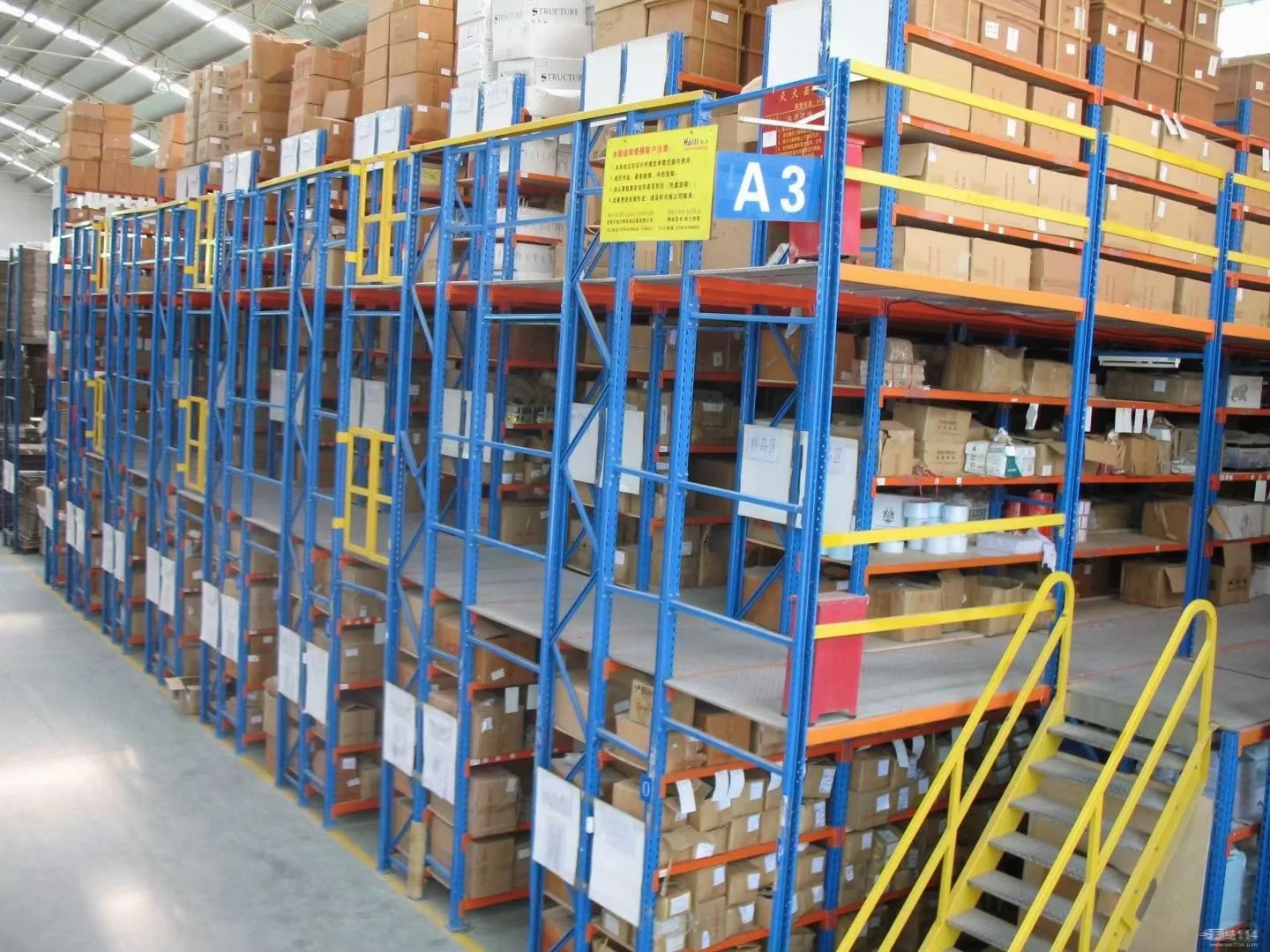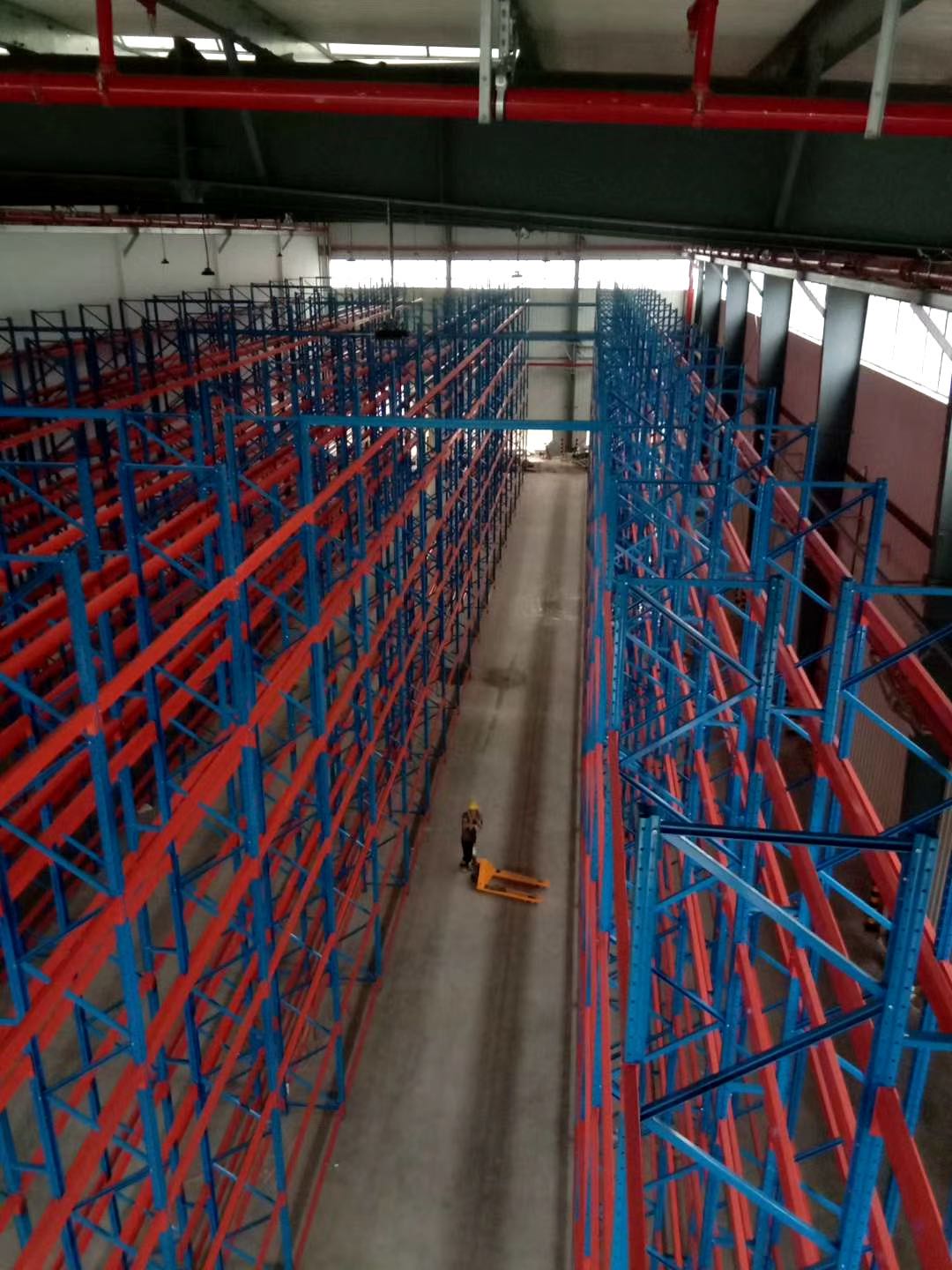In the relentless world of logistics, manufacturing, and warehousing, space is a premium commodity. Efficient storage isn't just a nice-to-have; it's the backbone of operational efficiency, safety, and ultimately, profitability. At the heart of any high-capacity storage solution lies a critical piece of infrastructure: industrial heavy duty racks. These are not your average shelving units; they are the engineered skeletons of modern warehouses, designed to hold immense weight and withstand the rigors of daily industrial use.
Choosing the right industrial heavy duty racking system is a significant investment that impacts everything from daily workflow to long-term scalability. A poor choice can lead to inefficient space utilization, product damage, and even catastrophic safety hazards. This comprehensive guide will walk you through the seven most critical factors you must evaluate to select the perfect industrial heavy duty racks for your facility, ensuring you make an informed decision that supports your business growth for years to come.

1. What Exactly Defines Industrial Heavy Duty Racks?
Before diving into the selection criteria, it's crucial to understand what sets industrial heavy duty racks apart from their lighter counterparts. While light-duty shelving might be suitable for storing small parts or office supplies, heavy-duty racks are engineered for a different league entirely.
Industrial heavy duty racks are structural storage systems designed to support palletized loads, often weighing thousands of pounds per level. They are typically constructed from rolled steel, which is formed into robust upright frames and horizontal beams. The key differentiators are:
Load Capacity: This is the most defining feature. Capacities can range from 1,000 lbs per beam pair to over 50,000 lbs per bay, far exceeding anything light-duty shelving can handle.
Structural Integrity: They are built to withstand not just the static weight of the stored goods but also the dynamic forces from forklift impacts, seismic activity (in certain regions), and the constant vibration of a busy warehouse.
Configuration: They are designed for use with material handling equipment, primarily forklifts and order pickers, allowing for easy loading and unloading of pallets.
Customization: True industrial heavy duty storage racks are highly customizable in terms of height, width, depth, and beam capacity to fit specific spatial and load requirements.
Understanding this fundamental definition ensures you're looking at the right category of equipment from the start.
2. Understanding Load Capacity and Beam Specifications
This is arguably the most technical and vital aspect of selecting your racking. Misunderstanding load capacity is a primary cause of system failure.
Uniformly Distributed Load (UDL): This is the maximum allowable weight that can be evenly distributed across a single level (a pair of beams). It is not the capacity of a single beam. If a beam pair is rated for 5,000 lbs UDL, the total weight of the pallet and its contents on that level must not exceed that weight.
Concentrated Load: Some specifications also include a concentrated load rating, which refers to the maximum weight that can be placed on a specific point of the beam. This is crucial if you are storing non-palletized items or heavy machinery parts that don't distribute weight evenly.
Beam Types: Beams come in various styles, with roll-formed and structural beams being the most common. Roll-formed beams are made from continuous coil steel and are a cost-effective solution for most applications. Structural beams are made from heavier-gauge steel and are used for the most extreme load capacities, often in foundries or for storing massive raw materials.
Safety Factor: Reputable manufacturers engineer their industrial heavy duty racks with a significant safety factor (often a ratio of 1.5:1 or 2:1). This means a beam rated for 10,000 lbs UDL will actually withstand 15,000-20,000 lbs before failing, providing a critical buffer for miscalculations or unexpected load shifts.
Always consult with a qualified rack designer or engineer to calculate your precise load requirements, factoring in the weight of your heaviest pallets and any potential future needs.
3. The Different Types of Industrial Heavy Duty Rack Systems
Not all industrial heavy duty racks are the same. The type you choose depends entirely on your inventory profile, workflow, and density needs.
Selective Pallet Racking: This is the most common and versatile type. It provides direct access to every single pallet, making it ideal for warehouses with a high number of SKUs where any pallet might need to be accessed at any time. It's the workhorse of the industry.
Drive-In/Drive-Thru Racking: Designed for high-density storage of homogeneous products. In drive-in systems, forklifts drive directly into the rack structure to place and retrieve pallets, which are stored on rails. This system sacrifices selectivity for density, as it operates on a Last-In, First-Out (LIFO) basis. Drive-thru racks allow access from both ends for a First-In, First-Out (FIFO) approach.
Push-Back Racking: Another high-density solution, push-back racks operate on a dynamic cart system built on a slight incline. When a new pallet is loaded, it pushes the previous pallets back. Retrieval works in reverse, bringing the last pallet loaded to the front first (LIFO). It offers better selectivity than drive-in while still providing excellent density.
Pallet Flow Racking: This system uses gravity to its advantage. Pallets are loaded on a high end onto wheeled tracks and flow gently down to the picking face on the low end. It is the ultimate FIFO system and is perfect for high-throughput operations with date-sensitive products.
Cantilever Racking: Essential for storing long, bulky, or awkwardly shaped items like lumber, pipes, furniture, or rolls of carpet. Instead of horizontal beams, these systems use strong vertical columns with arms that extend outwards, providing unobstructed access to the stored material.
Selecting the right type is a strategic decision that balances accessibility, storage density, and inventory rotation methodology.

4. The Critical Role of Safety and Compliance
Warehouse safety is non-negotiable. Industrial heavy duty racks, when improperly specified, installed, or maintained, pose a significant risk. Adhering to safety standards is a legal and moral imperative.
Rack Design Standards: In North America, the primary design standard is from the Rack Manufacturers Institute (RMI). The ANSI MH16.1 standard provides the specification for the design, testing, and utilization of storage racks. Ensure your supplier designs and manufactures their systems in full compliance with these standards.
Installation: Professional installation is crucial. A perfectly engineered rack can become a hazard if it is not plumb, level, and properly anchored to the floor. Never attempt a DIY installation.
Protection: Forklift impacts are the leading cause of rack damage. Installing robust column guards, post protectors, and barrier rails is essential to protect the structural integrity of your upright frames.
Load Signs: Every bay of racking should be clearly marked with a load sign indicating the maximum permissible UDL for each level. This provides a constant visual reminder for forklift operators.
Regular Inspections: Implement a formal inspection program. Daily visual checks by operators and more formal quarterly or semi-annual inspections by a qualified inspector can identify damage (like bent beams or dented uprights) early, allowing for repair before a major failure occurs.
Investing in safety is investing in the protection of your assets, your inventory, and, most importantly, your personnel.
5. Material and Manufacturing Quality: Don't Compromise
The raw materials and manufacturing processes used directly determine the strength, durability, and longevity of your industrial heavy duty storage racks.
Steel Grade and Gauge: High-strength, commercial-quality steel is a must. The gauge (thickness) of the steel used for upright frames and beams is a primary determinant of capacity. Thicker steel (a lower gauge number) generally means higher capacity. Inquire about the yield strength of the steel (e.g., 36 KSI or 50 KSI).
Manufacturing Process: Look for precision roll-forming for consistent beam profiles and robotic welding for uniform strength on upright frames. The finish is equally important. Powder coating is superior to simple paint as it provides a more durable, scratch-resistant, and corrosion-resistant surface, protecting the steel from moisture and chemicals that can weaken it over time.
Connections: The method of connecting beams to uprights is critical. The most common and reliable is the teardrop design, which allows for easy adjustment without tools. Ensure the connections are robust and that beam safety locks are standard to prevent accidental dislodgement.
Choosing a rack based solely on the lowest price often means compromising on the quality of steel or manufacturing, which can have severe consequences down the line.
6. The Importance of Professional Site Planning and Layout
You can't just order racks and hope they fit. A poorly planned layout leads to wasted space, inefficient traffic flow, and dangerous blind spots.
Space Utilization: A professional will perform a detailed analysis of your space, considering ceiling height, column placements, sprinkler system clearances, and door locations. The goal is to maximize your cube—using not just floor space but vertical air space as well.
Workflow Optimization: The rack layout must facilitate a smooth material flow—from receiving, to storage, to picking, to shipping. Aisles must be wide enough for your specific forklifts to maneuver safely but narrow enough to avoid wasting valuable square footage.
Future-Proofing: A good plan doesn't just address today's needs. It incorporates considerations for future growth, allowing for easy expansion or reconfiguration of the industrial heavy duty racks as your business evolves.
Many reputable rack suppliers offer free or low-cost layout and planning services using advanced CAD software, providing a 3D visualization of your future warehouse.
7. Maintenance, Inspection, and Long-Term Care
Your investment in industrial heavy duty racks doesn't end after installation. A proper maintenance regimen is key to ensuring a long service life and a safe working environment.
Immediate Repairs: Any observed damage must be addressed immediately. Do not continue to use a damaged bay. Most manufacturers offer replacement parts like individual beams or upright frames. In cases of significant upright frame damage, professional repair kits (like the Upright Frame Repair Kit from Steel King) can often be installed to restore strength without replacing the entire frame.
Documentation: Keep all original design drawings and load capacity specifications. This documentation is vital for inspections, insurance purposes, and any future modifications.
Employee Training: Consistently train all warehouse personnel on the importance of rack safety. They should be able to identify basic damage and know the protocol for reporting it.
By treating your racking as a critical asset and caring for it accordingly, you protect your operation and ensure a strong return on your investment.
Selecting the right industrial heavy duty racks is a complex but essential process that requires careful consideration of capacity, type, safety, quality, and planning. It is not a purchase to be rushed or based on price alone. By thoroughly evaluating these seven key factors and partnering with a reputable, knowledgeable manufacturer or supplier, you can implement a storage system that is not only safe and strong but also a powerful driver of efficiency and growth. Your racks are the silent workhorses of your operation; choosing wisely ensures they will support your success for decades to come.







